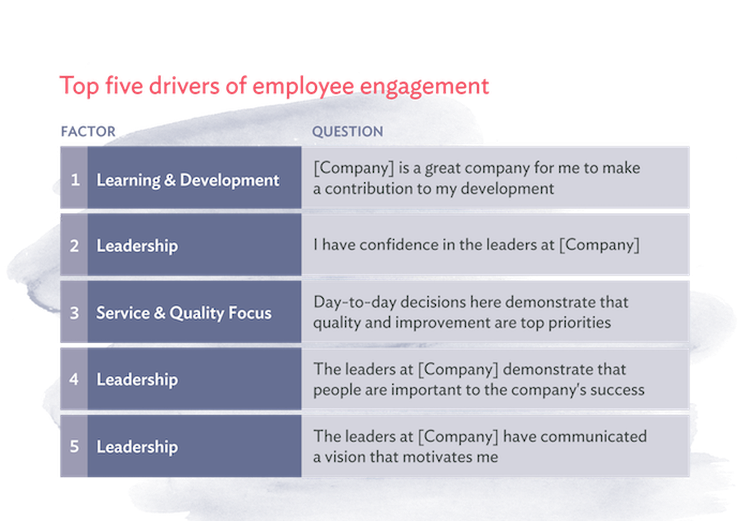
Article

Written by

Director of People Science Research, Culture Amp
When people receive ongoing feedback – no matter their level of seniority at a company – they’re able to grow and develop faster. We’ve previously talked about how one-on-one employee feedback is most effective when it happens more than once a year and what it means to build a culture of feedback within a company.
It’s this broad view – building a culture of feedback – that we’re covering in this article. A culture of feedback is built on a comprehensive employee feedback strategy. This strategy encompasses many components: company-wide feedback, developmental feedback, and employee experience feedback.
Whether you’re just exploring what it means to create an employee feedback strategy, looking to experiment with something new, or you’ve been collecting employee feedback for a while, this guide can help you.
Before we dive into the overall strategy, let’s look at the specific definition of feedback and what makes it most effective.
We define feedback as:
Information about past actions that is given to a person (or group) to be used as a guide for future improvement.
These three factors apply within any context of feedback - workplace or otherwise.
So, why is the concept of feedback becoming so important at work? Simply put, it helps people and organizations improve. Companies that adopt a culture of feedback are agile – they can learn faster and do more for their customers. The backbone of building that culture is a solid employee feedback strategy that utilizes employee surveys.

There are many different types of employee surveys you can use to build your employee feedback strategy.
That’s why we’ve put together a basic employee feedback strategy (including recommended surveys) any organization can implement in six simple steps. We’ll go through each, and later on, you’ll learn more about how to customize this strategy for your organization’s unique needs.
For a basic feedback strategy, we suggest these six steps:
Identify the key drivers of employee engagement in your organization, and see how you compare to other companies overall through relevant benchmarks.
Understanding what drives engagement at your company will help you make the biggest impact. In Culture Amp’s 2018 benchmark, we saw that the following five questions were the most significant drivers of employee engagement across the companies we work with.

In 2023, Culture Amp's data indicated that the top drivers of employee engagement were:
By comparing your scores to the benchmark scores, you can get an idea of how well your company is doing relative to other companies in your industry and/or region.
Once you understand the data, create a plan of action for areas of improvement. To make the most out of post-survey action planning, make sure you:
Then, communicate these actions and the overall survey results with your company. Often, survey results are communicated by tier.
For example:
Understand how people perceive their workplace at various stages of the employee journey through experience surveys such as candidate, onboarding, and exit surveys.
Employee experience surveys will help you:
Review any actions taken from your baseline engagement survey, and use employee experience feedback collected to improve processes like recruiting and onboarding. You can also link your engagement and experience surveys together to see what’s impacting retention or attrition.
Remember: how often you should survey is based on how quickly your organization can take action on the results.

Move deeper from organizational feedback to the team, manager, and individual levels. Once people at your organization have had experience with employee surveys as part of their onboarding and participating in company-wide surveys like engagement, they’re primed to participate in surveys for individual and team development.
Developmental feedback surveys will help you:
Now that you’ve collected company-wide, employee experience, and developmental feedback, take the time to go deeper on a particular issue. This could be by running another company-wide survey, like a benefits survey, or perhaps a survey related to one of your drivers of engagement, like learning and development. This can give you insight into how to best direct your resources and tackle more complex issues.
After your first year or so of building out your employee feedback strategy, take a step back to see how the pieces fit together. Decide if you want to survey more often, introduce more individual surveys, or perhaps scale back or regroup on a certain element.
Create an employee feedback strategy that is sustainable for your organization, and don’t be afraid to redefine what that looks like over time. This leads to one of the biggest considerations when crafting your strategy - survey cadence.
The right time to gather employee feedback depends on your resources and capabilities and the level of support for your employee feedback strategy throughout the organization. You likely already have a full calendar of people programs, so use that plan for the next year to build out your survey timings.
Consider the following for choosing the timing of your surveys:
As Culture Amp CEO Didier Elzinga says, “People don’t get survey fatigue; they get lack of action fatigue.” This is another way of saying - create a survey cadence that fits how quickly your organization can take action on the results of the previous survey.
When it’s time to plan your next surveys, think about:
Your employee feedback strategy is the backbone of a culture of feedback. Employee surveys allow you to collect feedback at scale so you can learn fast and take action. This process occurs at the individual, team, and company levels throughout many types of surveys.
That said, a successful employee feedback strategy also depends on candid in-person conversations between people. Anonymous feedback shouldn’t replace these meaningful firsthand conversations but can be used to guide those conversations. When employees see that their feedback is heard through surveys and they also find a receptive audience among their peers and leaders – a true culture of feedback is created.
Empower your people to better understand their skills and behaviors with valuable, continuous feedback from the people they actually work with.